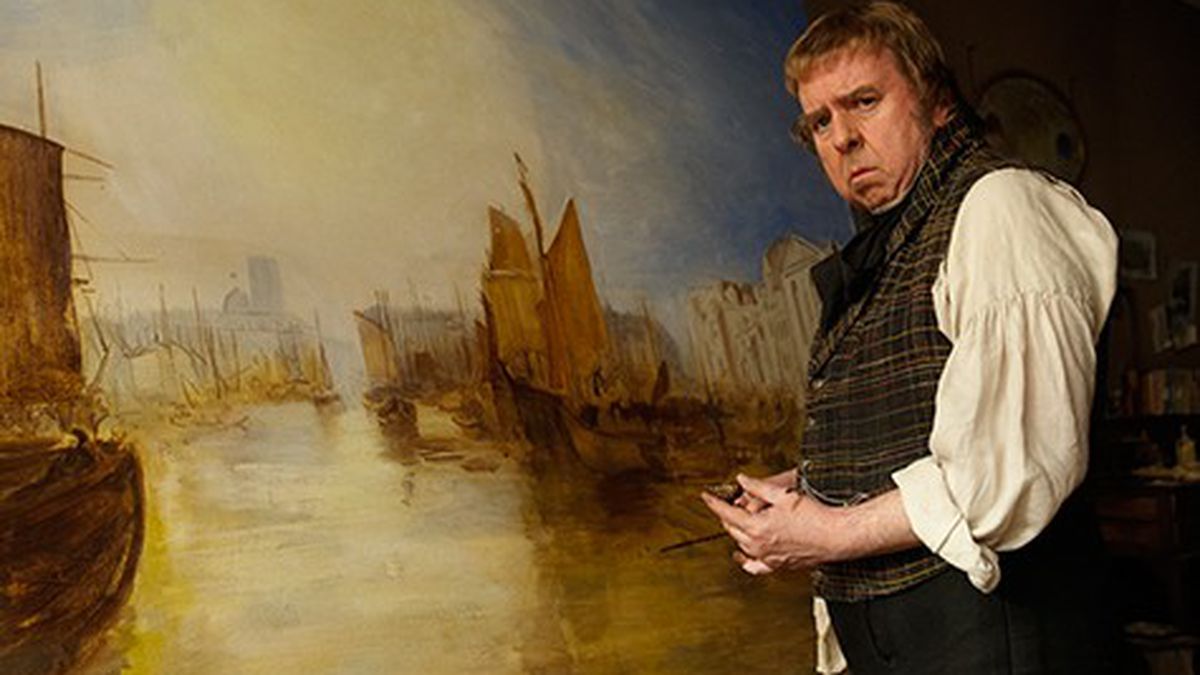As characterized by writer-director Mike Leigh and actor Timothy Spall in Mr. Turner, English painter Joseph Mallord William Turner (1775–1851) is a rather unpleasant guy. A stereotypical artistic eccentric, he scuttles down the streets of Victorian London and Margate like a choleric, fat crab, full of complaints and rheumy hallucinations when he’s in his cups (which is often), making up lies about himself and spitting on his canvases to achieve the desired effect. His relationships with women were as ghastly then as they seem now. He takes liberties with the help, and sexual foreplay is a foreign concept. He also bears a startling resemblance to the middle-aged Alfred Hitchcock.
Yet here he is, front and center, in another of Leigh’s portraits of bygone artists à la Topsy Turvy, grandly brought to life by Spall and redeemed the only way an artist should ever be — by his work, as we see it being done. “Mr. William” spends most of his screen time taking care of everyday business: selecting and mixing paints; entertaining rich patrons (one of them, the Pen Nib King, offers to buy Turner’s entire oeuvre for £10,000, and is turned down); sitting for a daguerreotype shot by a ninny photographer; posing a prostitute model in a brothel “as in despair” and then sobbing at the sight; making dour conversation with his chummy landlady Mrs. Booth (Marion Bailey), etc. Practically everything he does announces itself as part of another time and place entirely. But the Turner trait we can readily relate to is his habit of closely, patiently observing things and persons, especially in nature. He is the Man Who Watches.
Under the direction of Leigh (Happy Go Lucky, Vera Drake, Naked), master cinematographer Dick Pope’s images achieve exceeding gorgeousness in the manner of Turner’s radical new way of representing the sea and the land. Seeing the settings through Turner’s eyes helps us excuse the artist’s boorish behavior and appreciate his “ridiculous shipwrecks” (in the words of Turner’s bitter ex-wife) as the epitome of English visual romanticism — whether Queen Victoria liked them or not.















